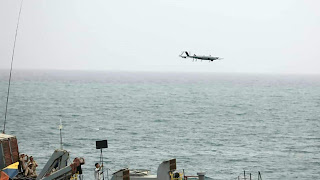Siemens Energy plans to withdraw from wind power
Balance sheet presentation
Siemens Energy plans to withdraw from wind power
Parts of the onshore wind turbine business are up for grabs. State guarantees cannot prevent this. Affected factories and jobs are threatened with hardship.
Christian Bruch illustrates the dimensions of the crisis. “We have the largest order backlog in the energy technology industry, and the success of the energy transition will require Siemens Energy,” emphasized the head of the DAX group during a memorable balance sheet presentation in Munich. Until the evening before, the federal government and banks, Siemens Energy and parent Siemens had been negotiating to secure state guarantees that were vital to survival. Final details are still open, Bruch's answers showed. What is clear, however, is that the crisis-ridden company has reinsured 7.5 billion euros of the twelve billion euros that banks guarantee for major Siemens Energy projects and Siemens is liable for another billion euros. But everything is still far from good.
Siemens Energy does not want to supply the entire world with wind turbines in the future
As a consequence of the escalated ongoing disaster, Bruch is considering a partial withdrawal from the onshore wind turbine business, where existing problems are concentrated. “When an area loses so much money, you have to question the strategy,” the manager realized after a three-year decline. In the past 2022/23 financial year alone (as of September 30th), the net loss was 4.6 billion euros on sales of 31 billion euros, after previous years had already seen lower red figures.
The CEO announced that the wind business will remain in deficit until 2026. An operating loss of around two billion euros is expected for 2023/24. Only sales of non-core business activities with expected revenues of 2.5 to 3.0 billion euros give hope for an annual profit of up to one billion euros in the current financial year.
What is more serious in the long term is that Siemens Energy no longer wants to supply the entire world with onshore wind turbines in the future. “Europe will be a key market and also the USA,” said Bruch vaguely. Asia no longer appears in this short list. In terms of technology, Siemens Energy will probably no longer offer all of today's wind turbine variants. Exactly which regions and products we are withdrawing from will be revealed to stock market investors next Tuesday.
Quality defects in the latest wind turbine model
In addition, Siemens Energy has suspended new business with the latest generation of onshore wind turbines, 5X. There, in particular, quality defects in blades and gears have occurred, which have recently caused billions in losses and now require new technical planning. Repairs to 5X turbines that have already been delivered should be thought of as a recall campaign in the auto industry, said Bruch. However, as in comparison, the turbines do not drive into the workshop themselves, which is why repairs will probably take several years.
When orders can be accepted again for the problem child 5X is still unclear. “We will make statements in a few weeks or months as to when we can get started again,” said Bruch. The only thing that is clear is that incoming orders for wind power will be very low in 2023/24.
Capacity utilization in the factories will decline
In conjunction with the partial withdrawal from the onshore sector, this raises the subsequent question of what this means for capacity utilization in the factories and staff. If you exclude the safe service business, around 7,000 people are employed in production in Spain, Portugal and outside Europe. Bruch admits that capacity utilization in the factories will decline. But you can also draw on a record order backlog, which, including fossil business, amounts to 112 billion euros across the group. What happens next on the personnel front also depends on when the new 5X business starts again.
The discontinued model of gas power plants is replaced by the future model of wind power
Whether employees will be threatened remains an open question for the time being. In Germany, where a total of 26,000 of 96,000 employees worldwide work for Siemens Energy, there are no factories for onshore turbines. Things look completely different, especially in Spain, where the business is based at the subsidiary in crisis, Siemens Gamesa, which was only recently completely taken over. Many jobs have been cut there recently.
This means that the fact remains for the time being that the gas-fired power plant business, which is actually considered to be a discontinued model, is the business that is currently keeping the supposed future business of wind energy alive, alongside that of electricity transmission grids. Bruch admits this openly. The twelve billion euros in guarantees that his company has just received with significant participation from the federal government are also intended for these fossil fuel and grid businesses. From this perspective, Siemens Energy must first complete the energy transition in-house. As things stand, this will be a long and arduous process.






Comments
Post a Comment